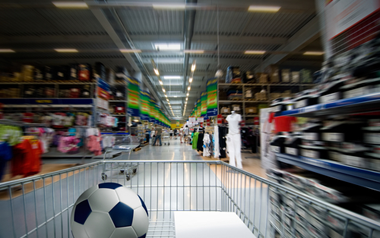Decisions between display and checkout
- Geschrieben von Joachim Heldt
 Shoppers change their minds about a fifth of their planned purchases – but they also make spontaneous purchases just as often: These were the findings of a recent study by the University of Cologne and GfK Marktforschung in collaboration with GS1 Germany. 3,300 purchases in supermarkets, superstores and discounters were put under the magnifying glass.
Shoppers change their minds about a fifth of their planned purchases – but they also make spontaneous purchases just as often: These were the findings of a recent study by the University of Cologne and GfK Marktforschung in collaboration with GS1 Germany. 3,300 purchases in supermarkets, superstores and discounters were put under the magnifying glass.
(so) “The results of this study put shoppers in a whole new light,” says Jörg Pretzel, CEO of GS1 Germany, at the 12th ECR Day in Berlin. “The study provides new groundbreaking insights for all future shopper marketing measures.”
The study shows, for example, that the probability of a spontaneous purchase rises by just under 30 percent if stores invest in a more pleasant atmosphere. This was the first time that the store atmosphere could be clearly proven to have a positive effect on sales. The scientists at the University of Cologne also defined the average shopper’s profile and behaviour in reliable figures: The average shopper is more often female, 49 year old on average, married with one child and has a household income of 2,350 euros. She goes shopping unaccompanied two to three times per week, requires 24 minutes for it and purchases goods in the amount of 29 euros without a shopping list.
The study confirmed the long-held assumptions that the average shopper makes 68 percent of all purchasing decisions once already at the point of sale; only 32 percent of purchases are already planned before going shopping, including which brand will be purchased. The high number of purchases spontaneously broken-off (22 percent) is accompanied by a full 23 percent of fully unplanned purchases – such as an impulsive grab for chocolate.
The wide-scale shopper study was presented exclusively to the approximately 1,000 participating experts and managers from manufacturers and retailers at the 12th ECR Day.
Sandra Osweiler
